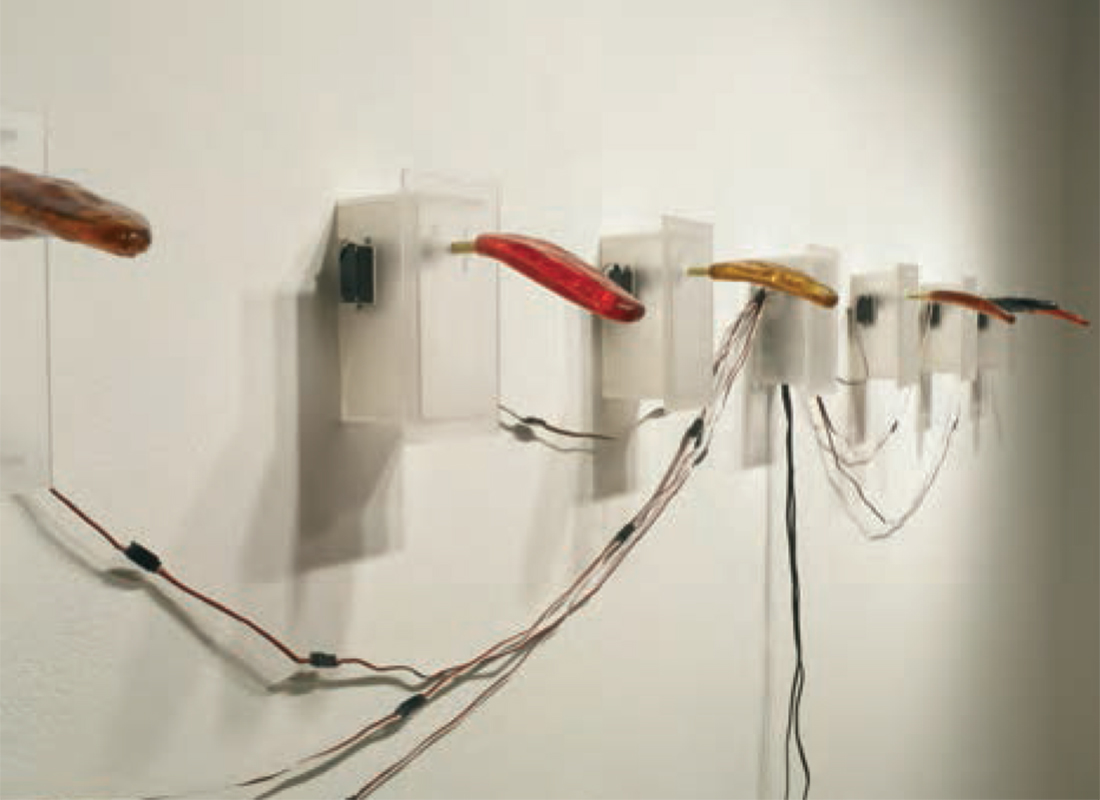Ingrid Bachmann. On Truth and Lies in the stricto sensu
Ingrid Bachmann, Pinocchio’s
Dilemma, 2007
May 11—June 11, 2012
For structural reasons, it is always impossible to prove, in the strict sense, that someone has lied, even if we can prove that he has not told the truth.
-Jacques Derrida, History of the Lie: Prolegomena
Deciphering the essence and meaning of truth has been a recurring theme of philosophical concerns and the reason for scientific inquiry. Equated with the real, truth has forged a pillar of human relationships and its unveiling or concealment has been cause for fighting and even historical twists. The lie, as its antagonist, has had equal prominence. But this binary pair (true/false), concealed mostly behind an alleged divine absolutism, can falter against the agendas of cultural relativism: what may be valid, true or morally right for some, would never work or have any validity for others.
A work that explores this topic is Pinocchio’s Dilemma (2007), an installation that Canadian artist Ingrid Bachmann presented at the 11th edition of the Havana Biennial as part of the group exhibition Open Score.
In Ingrid Bachmann’s corpus of work, composed mostly of installations, we see her interested in using special technology, but treated always as a means rather than an end in itself. The artist’s prime interest is in giving the viewer a moving experience and depending on the content of each piece, she creates works in which interaction is almost always a possibility. The space is also seen as a crucial aspect in the reception of the works, because she charges them with a dialogical sense. Pinocchio’s Dilemma falls within this set of features.
In her statement Bachmann declares that: Pinocchio’s Dilemma explores the uneasy relationship between the telling of stories and the telling of lies. I am interested in the stories we tell, as individuals and as a culture, and the intersection between lies and stories, fact and fiction.
In this case the artist appeals to our collective memory, appropriating the classic children’s story to discuss the flexibility of collective consciousness in regard to the absolutism of truth and falsehood.
The installation is composed of two works that are opposed by their placement in space and yet complement each other to give the installation its meaning: a set of wagging tongues and a protruding nose. Bachmann has set both the tongues and the nose in motion electronically, using various colourful materials to make them visually attractive.
Here, the tongues refer to language as a primal means of communication. But that channel, if we consider the issues Derrida raises in his History of Lies (…), is maimed since it is unable to transmit the sender’s intention, regarding what it expresses: the lie has to do with the means rather than what is said. There is no lying, only the intention. In consequence, the traditions, assumptions and beliefs of a particular culture are totally valid for Bachmann, and as such are real. They may be false for another culture, but that judgment would be lacking, in the strict sense, the complete groundwork.
But Pinocchio has a dilemma, and this is expressed in the nose that constantly increases and decreases in Bachmann’s installation. Who judges what is said? If Pinocchio narrates a fictional story, would he be telling a lie? For Derrida, fables and stories are not “lies” but belong to the realm of the virtual; they are a “simulacrum of reality,” which would be another level of truth. So the boundaries between truth and falsehood are blurred. There are half-truths, lies by omission, pious lies and even the much-mentioned suspension of credulity when we come closer to fiction. Pinocchio’s nose in Bachmann’s work represents the duality or the fine line between truth and lies, the doubt is to whether what is said comes from either/or both concepts.
Nietzsche meanwhile says in On Truth and Lies in Non-moral Sense that people shy away from lying just because of the possible moral consequences that involves both the liar and the deceived, if such a misrepresentation is discovered. This means that the consequences of social prejudice outweigh the private shame of telling a lie. This unveiling of the liar is presented in the story through the nose that stretches like a tree branch. But cynicism is such that if Pinocchio (and everyone else) could lie on his (their) own behalf without anyone noticing he (they) would probably do it all the time.
But this is only one possible conclusion that an undetermined culture would take from Ingrid Bachmann’s work.
Edisabel Marrero Tejeda graduated in Art History from Havana University in 2010. She works at the Contemporary Art Center Wilfredo Lam, where she assist in setting up exhibitions and other events. She also writes for the Bibliographic Bulletin Novedades at the Information Centre of that institution. During the 11th Biennial of Havana, she worked on Control Works, on the Web site and on the Biennial’s online newspaper. She has written articles for Cuban magazines such as Cuban Cinema.





